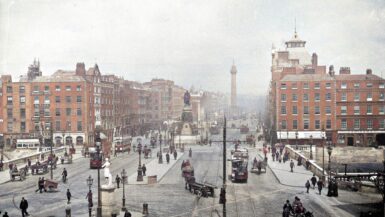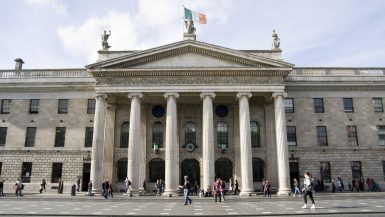The heart of Dublin city beats in rhythm with the pulsing locomotives and throngs of passengers that have flowed through Connolly Station for over a century. Serving as one of the principal railway stations in Dublin, Connolly Station holds a pivotal place in Ireland’s railway history. This article will take you on a journey through the station’s past, detailing its origins, operations, and the crucial role it has played in the development of Dublin and Ireland as a whole.
Introduction to Connolly Station
Originally known as Amiens Street Station, Connolly Station stands as one of the oldest railway stations in Ireland. Strategically situated on the north side of the River Liffey, it has played an instrumental role in facilitating travel across Ireland, making Dublin a central hub for both commerce and tourism.
Laying Down the Tracks: Origin and Design
Connolly Station opened its doors on 29 November 1844. Designed by the renowned architect William Deane Butler, it was initially built to serve as the terminus for the Dublin & Drogheda Railway (D&DR). The station’s original neo-classical façade, with its towering pillars and expansive arches, is a testament to the grandeur and ambition of Dublin’s railway age.
Gauge Distinctions: Wide or Narrow?
Connolly Station was constructed with a track gauge of 5 feet 3 inches, known as the Irish broad gauge. This distinction is crucial as it sets it apart from the narrower gauges found in other parts of Ireland. The broad gauge was selected for its stability and suitability for higher speeds, making it ideal for mainline and inter-city rail services.
Ownership and Operation: The Hands that Steered the Wheel
The initial operations of Connolly Station were overseen by the Dublin & Drogheda Railway. However, as the railway network in Ireland expanded and merged, the station saw a change in its operators. By the late 19th century, the station, along with its primary rail lines, became a part of the Great Northern Railway (Ireland) or GNRI. This entity managed the station’s operations until the mid-20th century.
Post the partition of Ireland in 1921, the management of the railways faced challenges due to the division of the island into two entities. This led to a joint management approach between the governments of Northern Ireland and the Republic of Ireland for the GNRI.
In 1950, following several years of joint management, the railway operations in the Republic of Ireland were nationalized, leading to the creation of the Irish transport entity, Córas Iompair Éireann (CIÉ). From this point onwards, CIÉ, and later its successor Irish Rail (Iarnród Éireann), took over the operations of Connolly Station.
Renaming and Modernization
In 1966, to commemorate the 50th anniversary of the Easter Rising, Amiens Street Station was renamed Connolly Station in honor of James Connolly, one of the leaders of the rebellion. This renaming was part of a broader movement during the period, wherein several stations and infrastructure across Ireland were renamed to honor the heroes of the nation’s quest for independence.
The latter half of the 20th century also saw significant modernization efforts. The station underwent extensive refurbishments to accommodate increasing passenger numbers and to update its facilities to contemporary standards.
Connolly Station: More Than Just Railways
While primarily a railway station, Connolly Station has diversified its transportation services over the decades. Today, it also serves as a key hub for the Dublin Area Rapid Transit (DART) system, regional commuter rail services, and intercity trains. Furthermore, with its proximity to the Dublin Port, it plays a crucial role in facilitating the transport of goods, adding another layer to its multifaceted operations.
Additionally, the station has been integrated into Dublin’s broader public transport network, with numerous bus routes and the LUAS tram system connecting through or near Connolly, making it a pivotal interchange for travelers in the capital city.
Cultural Impact and Significance
Beyond its transportation functions, Connolly Station has emerged as a cultural icon. Its historic architecture juxtaposed with modern trains serves as a visual reminder of Dublin’s journey from a historic city to a modern European capital. Over the years, the station has been featured in literature, film, and music, underlining its significance in the collective consciousness of Dubliners and Irish citizens alike.
Current Status and Future Prospects
Today, Connolly Station remains an open and operational hub, catering to thousands of passengers daily. With Dublin’s continued growth and the ever-evolving transportation needs of its residents and visitors, the station’s importance is only set to grow. While the station has seen numerous changes over its nearly two-century existence, its role as a central node in Ireland’s transport network remains unwavering.
In essence, Connolly Station embodies the spirit of Dublin – a seamless blend of historic charm and modern functionality. As the wheels of the trains continue to turn, the station stands as a testament to Dublin’s dynamic past and its promising future.







Leave a reply